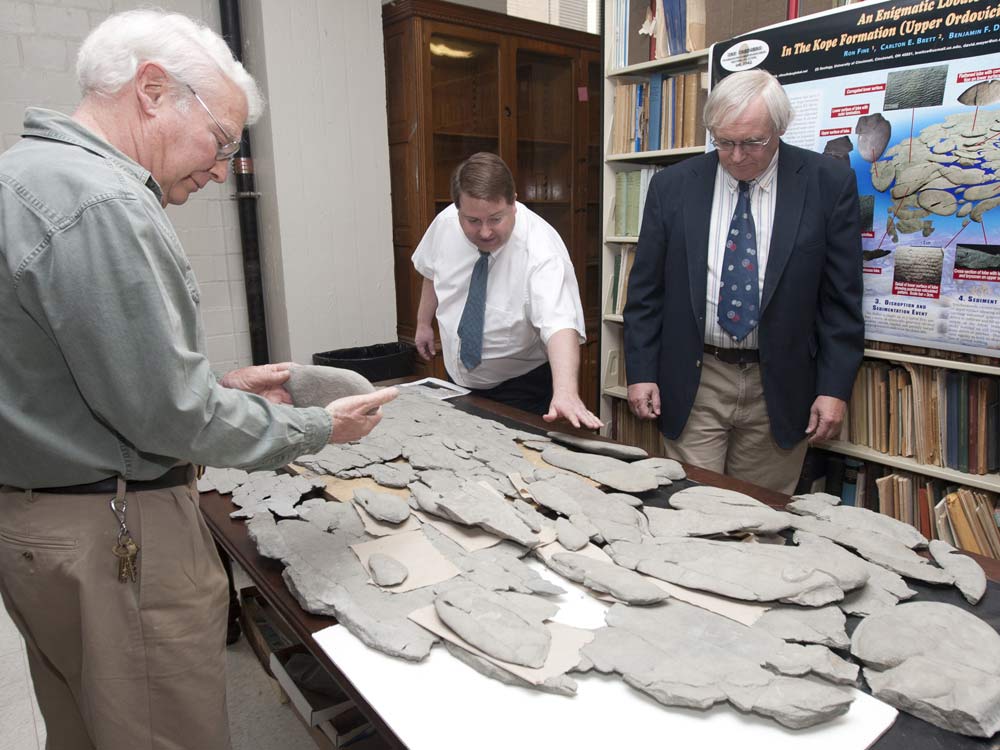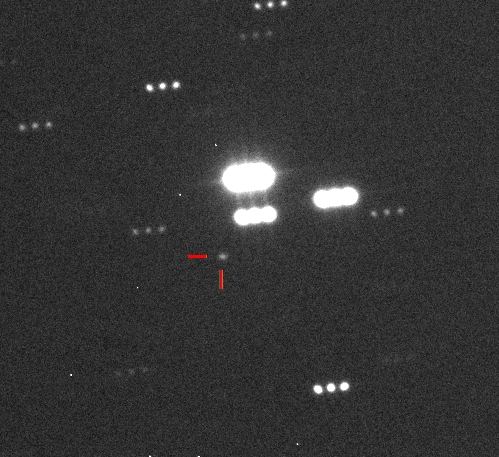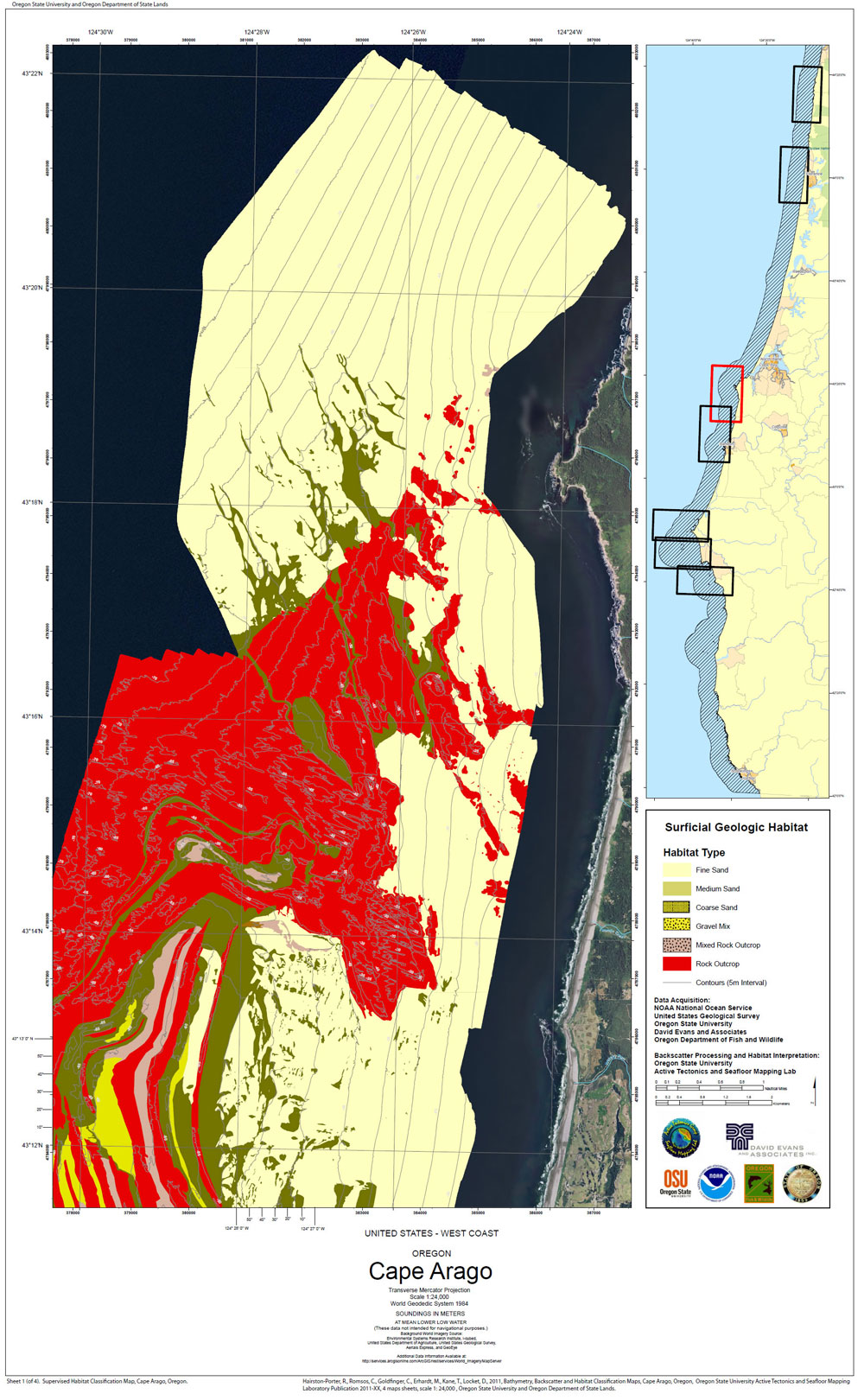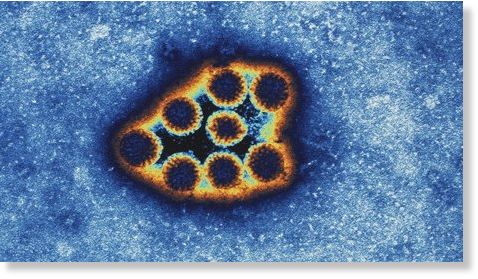
The researchers, who presented the finding at a Geological Society of America meeting in Dayton, Ohio, say one thing is sure: The enigmatic "blob" - discovered in elliptical pieces that, when fitted together, extended about 7 feet (2.1 meters) long and 3.5 feet (1 meter) wide - was once alive.
The team of scientists, along with the fossil hunter who discovered the 450-million-year-old specimen, suggest a range of possibilities: a type of huge algae or microbial mat, or even a member of the cnidarian family, which includes jellyfish (though scientists concede the jellyfish idea is highly unlikely).
"It's really got us baffled as to just how it looked when alive," David Meyer of the University of Cincinnati geology department told LiveScience. "My initial thought was an algal mat on the sea bottom, and then it got deformed somehow into these funny shapes and then preserved."
A paleontologist not involved in the discovery doubts the organism was a complex life.
"The discovery is certainly interesting. I would diverge on the interpretation, however," said Bruce Lieberman, a University of Kansas geology professor who is senior curator of invertebrate paleontology at the university's Biodiversity Institute. "I wonder if it is possible that this represents several broken pieces of a coral that died and were then overgrown, either by a bryozoan or possibly a sponge, as it lay on the seafloor."











